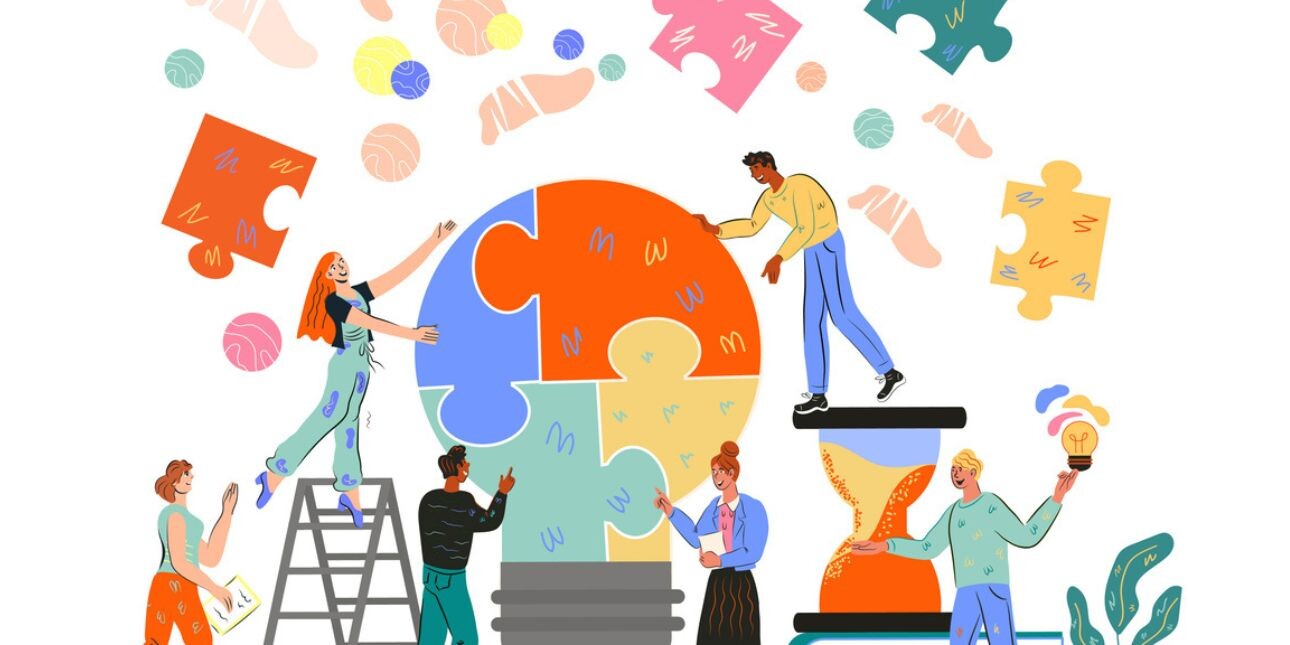Six practical ways to create a more neuroinclusive workplace
With up to 50% of creative professionals being neurodivergent, it’s time to rethink workplace norms. Here’s how to make work more inclusive for differently wired minds – and more thriving, to boot
It’s estimated that 20% of the population is neurodivergent – and that number is thought to be as high as 50% in creative industries. But despite a noticeable rise in public awareness of neurodivergent conditions such as Autism and ADHD, neurodiversity is often still overlooked in the workplace.
We know that diversity of thought fosters innovation and enables us to engage with underrepresented groups across society. According to research carried out by Universal Music, 96% of creative businesses believe there is a competitive advantage to a neurodiverse workforce. Studies also suggest that teams with neurodivergent professionals in some roles can be 30% more productive than those without them (Deloitte Insights).
Differently wired brains
Undoubtedly, neurodivergent team members bring valuable perspectives and challenge conventional thinking. The neurodivergent 20% often share an array of common strengths. Attention to detail, problem-solving, the ability to thrive under pressure. Resilience, big-picture thinking, pattern recognition and heightened empathy. There can be many positives to having a brain that is wired differently.
But it’s equally important to recognise the challenges that neurodivergence can bring. Crucially, neurodivergence isn’t a preference for one way of working over another. It’s not a personality trait or a label. It’s a scientifically recognised cognitive difference.
By acknowledging that some brains function differently, we can create space for neurodivergent colleagues to work in ways that play to their strengths – rather than exacerbate their challenges. For example, in ADHD, dopamine levels affect executive function and focus regulation. Work that is unstructured or tedious can feel overwhelming and challenging to start. Yet when a deadline is looming or work is engaging, someone with ADHD can tap into ‘hyperfocus’ – an immersive state of intense focus where time disappears and it’s difficult to stop.
Rethinking workplace norms
While neurodivergent individuals bring unique strengths, most workplaces aren’t designed with them in mind. The traditional 9-5 day assumes linear productivity, but many neurodivergent people thrive in cycles – moving between periods of supercharged productivity and energy recovery. Workplace norms can require creativity on-demand (brainstorming), and sustained focus in loud and bright environments. Many neurodivergent individuals will overcompensate or mask their challenges to ‘fit in’ with workplace norms. Over time, if not recognised, that masking can lead to exhaustion, anxiety and low self-esteem.
For some, the difficulty starts before joining the workforce, with outdated and inaccessible recruitment processes creating a barrier to employment in the first place. The Achievability ‘Neurodiverse Voices‘ report shows that 73% of people choose not to disclose their neurodivergence at interview stage for fear of discrimination.
As leaders, managers and colleagues, we can take steps to start to tackle these problems and nurture neurodivergent talent.
- Normalise talking about neurodiversity. By openly discussing neurodiversity and inclusive ways of doing things, you start to create a culture where neurodivergent colleagues feel safe to share.
- Communicate clearly. Some neurodivergent colleagues may prefer to receive information like instructions and deadlines by email. As a manager, be flexible in how you communicate with your team.
- Hold neuro-friendly meetings. Always set an agenda and share it in advance to allow time for thought processing and preparation. Schedule breaks in long meetings, keep introductions to name and job title, avoid mandatory verbal icebreakers, and invite written contributions pre/post-meeting.
- Be supportive. Allow neurodivergent colleagues to get tasks done in a way that works for them. Encourage the use of quiet spaces and time blocking for deep work, and visual aids and tools for planning and organisation.
- Make proactive adjustments. This might mean giving adequate notice of meetings so a neurodivergent colleague can make their best contribution or providing context when asking for a chat.
- Finally, ask what colleagues need and do something with what they tell you. While there are common characteristics to neurodivergent conditions, people’s experiences will vary greatly.
These are small measures that could have a big impact in your workplace. When neurodivergent professionals feel safe and supported, they can be themselves. And when we build workplaces that allow different minds to thrive, we’re not just making things fairer, we’re creating a culture where everyone can do their best work.
Resources, help and support
If you are seeking support with neurodivergence, help is available in a variety of places including Healthy Minds, The National Autistic Society and ADHD UK.
For more advice on neuroinclusion at work, see the CIPD ‘Neuroinclusion at Work‘ guide. The CIPR also offers a series of guides on advancing Equity, Diversity and Inclusion in the PR profession.
Neurodiversity is a broad term that covers a range of conditions beyond Autism and ADHD. When developing your knowledge of neurodiversity, it’s important to seek out a diverse range of perspectives and lived experiences.

